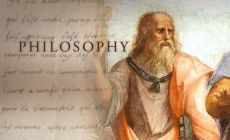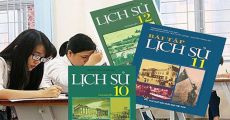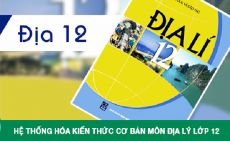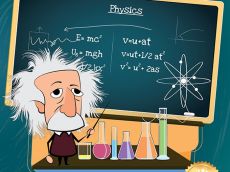Read the following passage and mark the letter A, B, C, or D on your answer sheet to indicate the correct answer to each of the questions
MONA WHO
A young woman without eyebrows is seated in front of a beautiful landscape. Does this sound familiar to you? This is one of the most famous works by Leonardo da Vinci. The Mona Lisa is a beautiful painting. However, it was the mystery behind the painting that intrigued people. Who was the woman and why did da Vinci paint her?
Different theories have been proposed about her identity. Many art and history buffs thought that it was a portrait of da Vinci himself, but as a woman. Others thought it was not any particular person, but the ideal of a woman. They say this is why she was painted with no eyebrows. This gave her face a more unearthly look. Still, others thought that it was a portrait of an actual woman of the time, the wife of Francesco del Giocondo.
In 2005, historian Armin Schlechter of Heidelberg discovered the answer. While looking through an old manuscript, he found a small note. In this, the woman in the Mona Lisa was positively identified as Lisa del Giocondo. The artist had been paid to do her portrait after the birth of her second child. “Mona,” in fact, means “madam” in Italian. As for her unearthly look? Historians say women of this time liked to remove their eyebrows. Apparently, they thought eyebrows were not attractive.
Câu 31 : What is the main idea of this reading?
Hãy suy nghĩ và trả lời câu hỏi trước khi xem đáp án
Lời giải:
Báo saiKiến thức: Đọc hiểu ý chính
Giải thích:
Ý tưởng chính của bài đọc này là gì?
A. Da Vinci đã tạo ra một bức tranh tuyệt vời như thế nào
B. Việc tạo ra một bí ẩn lớn
C. Xu hướng thời trang từ lâu
D. Thân phận của một người phụ nữ nổi tiếng
Thông tin: However, it was the mystery behind the painting that intrigued people. Who was the woman and why did da Vinci paint her? Different theories have been proposed about her identity
In 2005, historian Armin Schlechter of Heidelberg discovered the answer.
Tạm dịch: Tuy nhiên, chính bí ẩn đằng sau bức tranh mới khiến người ta tò mò. Người phụ nữ là ai và tại sao da Vinci lại vẽ cô ấy? Các giả thuyết khác nhau đã được đưa ra về danh tính của cô ấy
Năm 2005, nhà sử học Armin Schlechter ở Heidelberg đã khám phá ra câu trả lời.
Chọn D.
Câu 32 : According to the reading, what is one point about the Mona Lisa that intrigued people?
Hãy suy nghĩ và trả lời câu hỏi trước khi xem đáp án
Lời giải:
Báo saiKiến thức: Đọc hiểu chi tiết
Giải thích:
Theo bài đọc, một điểm nào về Mona Lisa khiến mọi người tò mò?
A. Mẫu phụ nữ lý tưởng của Vinci
B. Nơi nó được vẽ
C. Kiểu tóc của cô ấy
D. Cô ấy không có ong mày
Thông tin: They say this is why she was painted with no eyebrows. This gave her face a more unearthly look.
Tạm dịch: Họ nói rằng đây là lý do tại sao cô ấy được vẽ không có ong mày. Điều này làm cho khuôn mặt của cô ấy trông lạ hơn.
Chọn D.
Câu 33 : What could the word “unearthly” mean in this reading?
Hãy suy nghĩ và trả lời câu hỏi trước khi xem đáp án
Lời giải:
Báo saiKiến thức: Từ vựng
Giải thích:
Từ “unearthly” có thể có nghĩa gì trong bài đọc này?
A. Lý tưởng
B. Đáng sợ
C. Cụ thể
D. Hiện thực
Thông tin: They say this is why she was painted with no eyebrows. This gave her face a more unearthly look.
Tạm dịch: Họ nói rằng đây là lý do tại sao cô ấy được vẽ không có ong mày. Điều này làm cho khuôn mặt của cô ấy trông lạ hơn.
Chọn A.
Câu 34 : According to the reading, which of the following was NOT an idea about the identity of the woman in the Mona Lisa?
Hãy suy nghĩ và trả lời câu hỏi trước khi xem đáp án
Lời giải:
Báo saiKiến thức: Đọc hiểu chi tiết
Giải thích:
Theo bài đọc, ý kiến nào sau đây KHÔNG phải là ý tưởng về danh tính của người phụ nữ trong bức Mona Lisa?
A. Leonardo da Vinci đã tự vẽ mình.
B. Cô ấy đã kết hôn với Francesco del Giocondo.
C. Leonardo da Vinci đã vẽ một thành viên trong gia đình của chính mình.
D. Cô ấy không hẳn là một phụ nữ cụ thể nào
Thông tin:
A. Many art and history buffs thought that it was a portrait of da Vinci himself, but as a woman.
B. Still, others thought that it was a portrait of an actual woman of the time, the wife of Francesco del Giocondo.
D. Others thought it was not any particular person, but the ideal of a woman.
Tạm dịch:
A. Nhiều người yêu thích nghệ thuật và lịch sử cho rằng đó là chân dung của chính da Vinci, nhưng là một phụ nữ.
B. Tuy nhiên, những người khác cho rằng đó là chân dung của một người phụ nữ thực sự thời đó, vợ của Francesco del Giocondo.
D. Những người khác cho rằng đó không phải là bất kỳ cá nhân cụ thể nào, mà là lý tưởng của một người phụ nữ.
Chọn C.
Câu 35 : How do we know who the woman in the Mona Lisa is?
Hãy suy nghĩ và trả lời câu hỏi trước khi xem đáp án
Lời giải:
Báo saiKiến thức: Đọc hiểu chi tiết
Giải thích:
Làm sao chúng ta biết được người phụ nữ trong bức tranh Mona Lisa là ai?
A. Một nhà sử học đã nhìn kỹ bức chân dung.
B. Tên trên bức chân dung cho chúng ta biết.
C. Không có lông mày.
D. Ai đó đã viết về nó từ lâu.
Thông tin: While looking through an old manuscript, he found a small note. In this, the woman in the Mona Lisa was positively identified as Lisa del Giocondo.
Tạm dịch: Trong khi xem qua một bản thảo cũ, anh tìm thấy một mẩu giấy nhỏ. Trong đó, người phụ nữ trong bức tranh Mona Lisa được xác định là Lisa del Giocondo.
Chọn D.
Đề thi giữa HK1 môn Tiếng Anh 10 CTST năm 2022-2023
Trường THPT Phan Đăng Lưu











